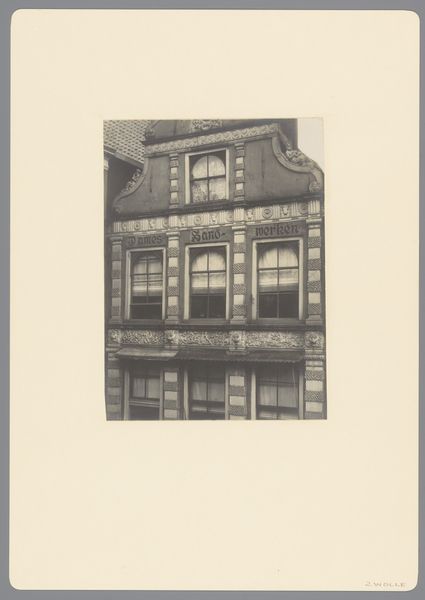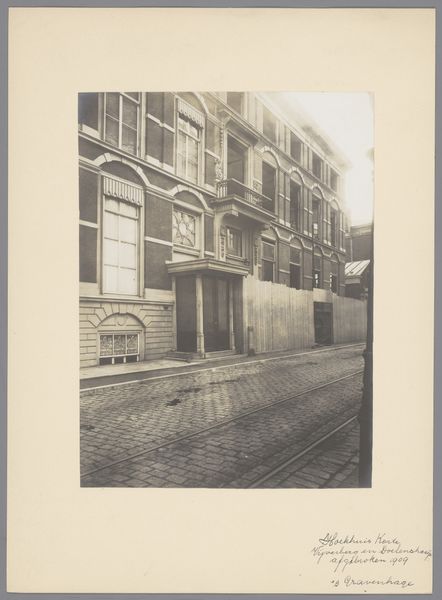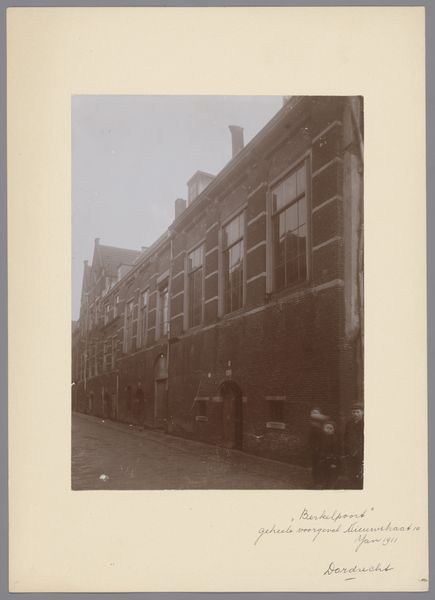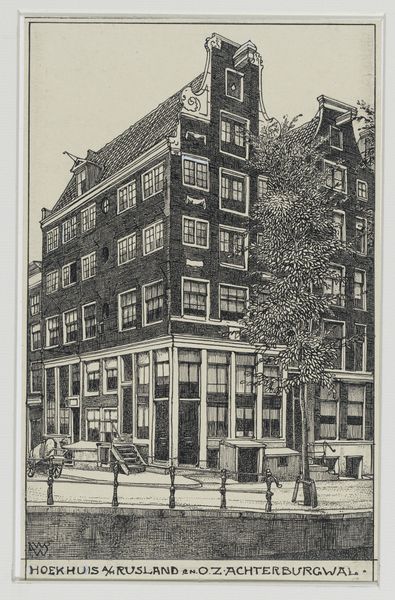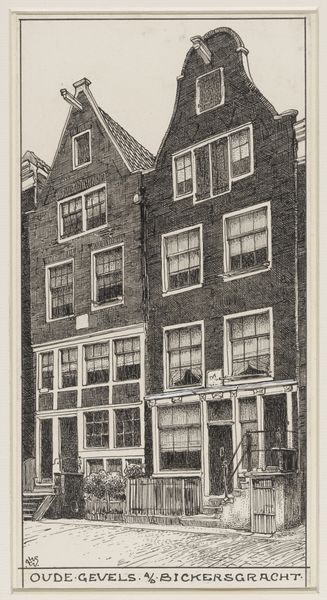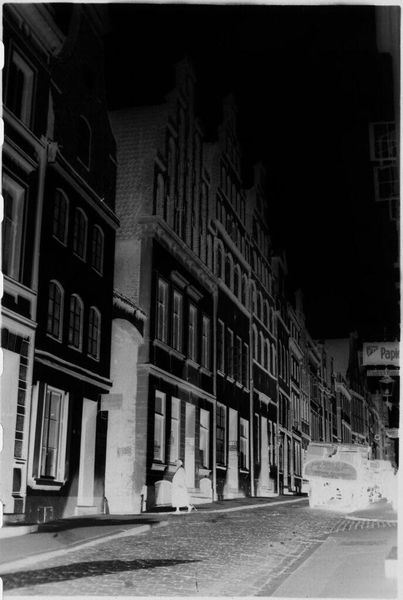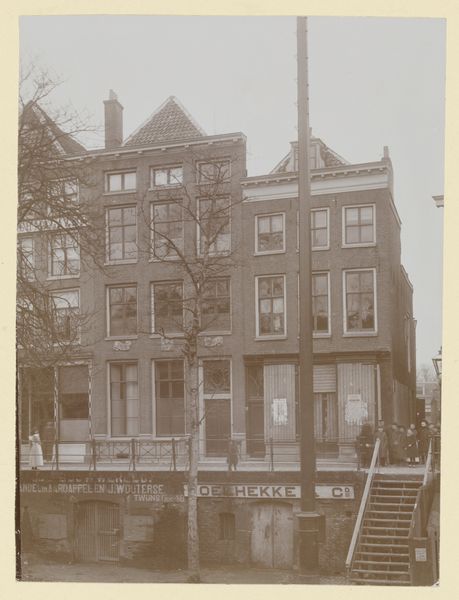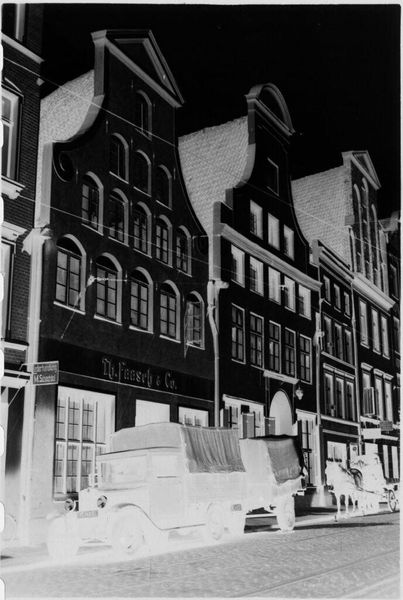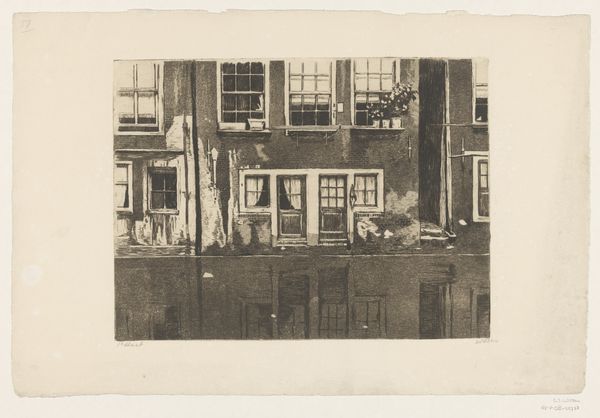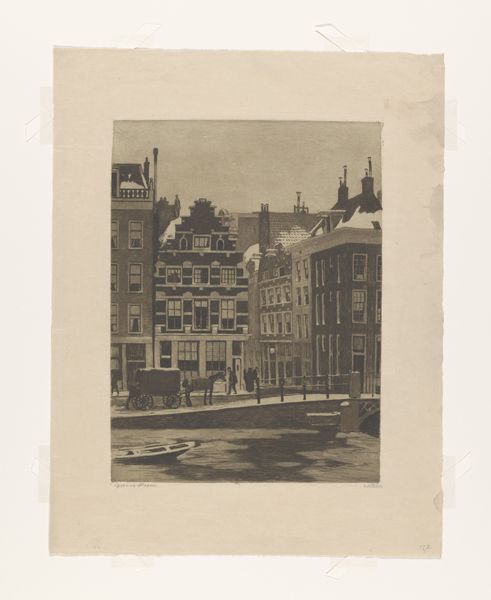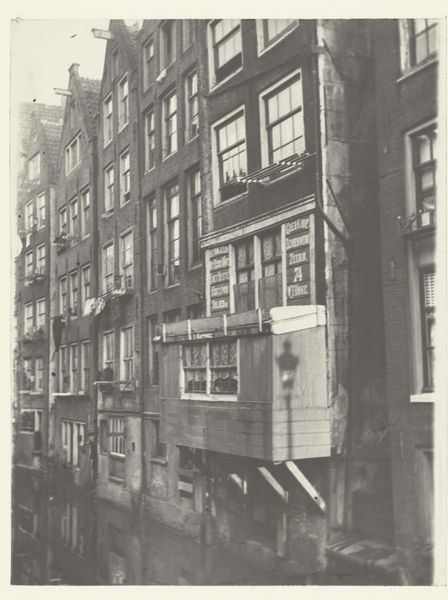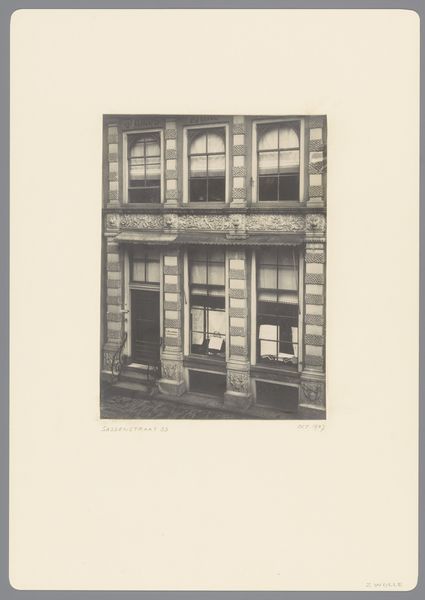
Dimensions: height 12 cm, width 18 cm
Copyright: Rijks Museum: Open Domain
Editor: Here we have an unsettling black and white gelatin silver print from 1945, "Portret Hitler het raam uit," whose artist is anonymous. What I find immediately striking is the contrast between the architecture, with the framed portrait of Hitler casually hanging on its facade. How would you interpret this jarring image? Curator: The symbolism here is deeply embedded in cultural memory. We see a portrait of Hitler, not venerated or displayed with authority, but hanging precariously. It evokes the collapse of an ideology, almost as if the image itself is being evicted, mirroring the rejection of the Nazi regime. Note how it interacts with the Dutch flag - does this further cement its anti-establishment message? Editor: I see what you mean, like the city is literally throwing him out with the trash after an eviction! The angle and placement create that precarious, off-balance feel. It definitely carries a powerful message. Curator: Precisely. And consider what this photograph represents: a collective act of defiance and a reassertion of national identity in the wake of occupation. This potent image becomes a shared emblem of liberation and catharsis. But isn’t it also, to some degree, mocking Hitler and what he stood for? Editor: Yes, absolutely! It’s a degradation of his image. I guess it can serve as a way of moving on and asserting victory for those who’d been oppressed. It’s an amazing expression! Curator: It speaks volumes about how societies use symbols to process trauma and rebuild their identities. A fascinating intersection of photography, symbolism, and cultural reckoning, don’t you think? Editor: It really is. Thanks for illuminating the work's depth of cultural meaning. I'll never look at it the same way again!
Comments
No comments
Be the first to comment and join the conversation on the ultimate creative platform.
